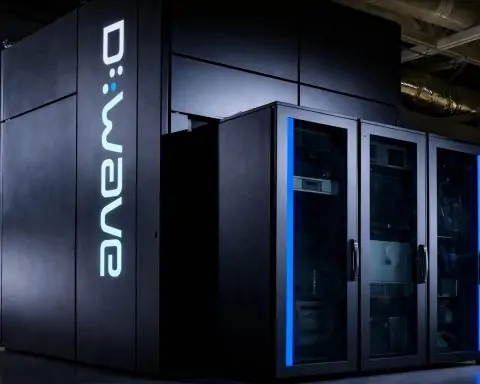- Stock Price & Performance: Ford Motor Company (NYSE: F) shares are hovering around the mid-$11 range (~$12) as of October 23, 2025, roughly flat compared to last week’s close and still up about 20–25% year-to-date [1]. The stock was rattled by an early-October selloff but has since rebounded, with bargain-hunters stepping in after a 6% one-day plunge on Oct. 7 [2] [3]. Analysts note Ford’s stock now trades near the middle of its recent range – below summer highs (~$12.50) but well above its lows, reflecting both optimism and caution in the market.
- Earnings on Deck: All eyes are on Ford’s third-quarter earnings report, set for release today (Oct. 23) after the market close. Wall Street forecasts around $0.35–$0.38 in Q3 EPS on roughly $42–43 billion in revenue, which would mark a ~20% profit drop year-over-year [4]. Ford surprised to the upside last quarter – earning $0.37/share on $50.2B in Q2 and reaffirming its full-year 2025 guidance of about $1.00 EPS (with a goal to double that to ~$2.00 in 2026) [5]. Investors will be watching if Ford can beat these modest expectations or if recent headwinds force a more cautious outlook. Any earnings surprise or guidance change could spark a major stock move in the coming days.
- $1 Billion Supply Shock: In mid-September, a devastating fire at a key Novelis aluminum plant (a primary supplier for Ford’s F-150 pickups) dealt Ford a major blow. Evercore analysts estimate this parts shortage could wipe out $500 million to $1 billion of Ford’s 2025 earnings [6]. When the fire’s impact became clear, Ford’s stock nosedived ~6–7% in a single day (Oct. 7) [7]. Ford scrambled emergency teams to find alternate materials, but the damaged supplier facility is expected to remain offline until early 2026 [8]. That means production of the lucrative F-Series trucks – Ford’s cash cows – could be constrained for months. This unforeseen supply crisis has become a central concern for Ford’s upcoming earnings and 2024 outlook.
- Quality & Recall Woes: 2025 has been a nightmare year for Ford’s quality control, with the automaker issuing 109 U.S. safety recalls – over three times more than any competitor [9]. Just this week, Ford announced a new recall of 1.45 million vehicles to fix faulty rear-view cameras [10], on top of nearly 1.9 million vehicles recalled last month for the same issue [11]. Federal regulators even fined Ford $165 million in late 2024 for slow execution of recalls [12] [13]. CEO Jim Farley has bluntly called improving quality a “multi-year” top priority [14], as warranty repairs and recall costs continue to dent earnings. The latest recall – and Ford’s pledge to extend camera warranties to millions of owners – underscores the ongoing challenge to shake its quality troubles [15].
- EV Slowdown & Strategy Pivot: Ford’s electric vehicle ambitions have hit a wall amid an industry-wide EV sales slump. In Q2 2025, Ford’s Model e (EV division) lost about $1.3 billion – roughly $22,000 per EV sold – as its electric sales plunged 31% year-over-year [16]. Ford’s U.S. EV market share is stuck around 5%, a distant third behind Tesla and GM [17]. In response, Ford is slashing EV costs and scaling back its rollout plans – including ~1,000 layoffs at its Cologne, Germany EV plant and delaying new EV models until demand improves [18]. Even the flagship F-150 Lightning electric pickup has underperformed expectations despite multiple price cuts [19]. Ford has retrenched on some EV projects (canceling a planned electric SUV and other programs) while plotting a comeback with cheaper next-gen models. It recently announced plans for a $30,000 midsize EV pickup by 2027, aiming to compete with low-cost Chinese rivals [20] [21]. Ford acknowledges the EV market “didn’t develop as expected” in 2025, and CEO Jim Farley said he “wouldn’t be surprised” if U.S. EV demand is cut in half in the near term now that federal tax credits have expired [22] [23].
- Gas Trucks = Cash & Dividends: Ford’s traditional gasoline trucks and SUVs remain its profit engine and are effectively funding the EV transition. In the third quarter, Ford’s U.S. vehicle sales jumped 8.2% to 545,000 units, driven by strong demand for F-Series pickups, Bronco SUVs, and Maverick trucks [24] [25]. These high-margin models generate robust cash flow and have even prompted Ford to boost production to meet demand [26] [27]. The legacy combustion business is also propping up Ford’s hefty dividend, which yields ~5–6% at recent prices [28]. Ford pays a quarterly dividend of $0.15 per share and notably did not cut the payout despite this year’s turmoil [29]. That dividend (among the highest in the auto sector) signals management’s confidence in Ford’s cash generation, though skeptics note it also ties up cash that could be used for EV investment or debt reduction [30].
- Labor Peace & Policy Tailwinds: Unlike some Detroit rivals, Ford has labor stability on its side. The company reached a new 4-year contract with the UAW in late 2023, securing labor peace through at least 2027 and avoiding the major strikes that hit competitors [31] [32]. To build on this goodwill, Ford hired a veteran Boeing negotiator as its VP of Global Labor Relations this year [33]. On the policy front, Washington’s latest trade moves are a mixed bag but mostly positive for Ford: the government is enacting a 25% tariff on imported trucks (effective Nov. 1) and extending tax credits for U.S.-made auto parts [34] [35]. Ford’s CEO Jim Farley praised the measures, saying the parts credit will help make domestic manufacturing more affordable and the truck tariff will “level the playing field” against foreign rivals [36]. Ford does face higher costs on any components it imports (it’s cited about a $3 billion annual tariff hit on parts) [37], but as a company that builds ~80% of its U.S.-sold vehicles domestically, Ford stands to benefit from “Buy American” incentives more than most [38] [39]. High interest rates remain a headwind (costlier auto loans are softening demand), but if the Fed begins cutting rates in 2026, it could revive vehicle sales and provide a macroeconomic tailwind [40].
- Analyst Sentiment & Outlook: Wall Street is cautiously optimistic on Ford. Most analysts rate F stock a “Hold”, and the average 12-month price target sits around $11–$12, roughly where the stock trades now [41]. Price targets range widely – from as low as ~$7 to as high as ~$15 – reflecting a divide between EV skeptics and long-term bulls [42]. The bull case: Ford looks cheap at ~15× earnings and offers a rich dividend, with one upbeat analyst arguing that “if Ford can simply get out of its own way – deliver trucks, avoid new quality fiascos, and steadily improve EV economics – the underlying value will shine through.” [43] Value investors point to Ford’s 120-year brand, loyal F-Series customer base, profitable Ford Credit arm, and solid balance sheet as underappreciated strengths [44]. Bears counter that clear catalysts are lacking until Ford proves it can execute in the EV era without stumbles [45]. Even CNBC’s Jim Cramer has warned that if Ford’s numbers “come down” much more, “the stock could slip below $11.” [46] Near-term consensus calls for a steep earnings drop – analysts see full-year 2025 EPS around $1.16 (nearly 35% below 2024) [47] [48] – before a potential rebound in 2026. Ford itself is targeting ~$2.00 EPS in 2026, essentially doubling profits once it works through current challenges [49]. In the short run, sentiment remains in “show me” mode; Ford will need a few solid quarters of execution (and fewer negative surprises) to convince the street and unlock upside beyond the low-teens [50] [51].
Roller Coaster Recent Performance
Ford’s stock has been on a wild ride in October, underscoring the market’s fickle sentiment. After climbing near 52-week highs above $12 over the summer, shares suddenly plunged in early October when a cascade of bad news hit. The most jarring was the September 16 fire at a major Novelis aluminum supplier plant in upstate New York – a critical source of material for Ford’s top-selling F-Series trucks. When reports of the fire’s impact surfaced on Oct. 7, Ford’s stock nosedived about 6–7% in a single session [52], wiping out roughly $3 billion in market value. By the next day, the stock had sunk from the low $12s to the mid-$11s amid heavy trading, as investors feared the production of lucrative F-150 pickups could be crippled for an extended period.
Encouragingly for shareholders, the sell-off was short-lived. Within days, bargain hunters and long-term investors stepped in, seemingly convinced that the sell-off was overdone. By mid-October, Ford’s stock had bounced off its lows, climbing back to around $11.9 by Oct. 17 [53]. As of Oct. 23, shares are trading around the mid-$11s (~$12) – essentially flat compared to a week ago [54]. The stock remains below its pre-fire peak, but notably still up about 20–25% for 2025 to date [55] thanks to strong gains earlier in the year. In short, October’s turbulence has been a reminder of how quickly sentiment can swing on Ford, yet the overall 2025 trend is still positive.
From a technical standpoint, Ford shares are mid-range in the context of recent months. The mid-$12s have acted as a resistance ceiling (around the 52-week high area), while dips into the high-$10s have found support as value-focused buyers step in [56]. The early-October plunge briefly breached that support, but the swift rebound suggested many investors saw the sub-$11.50 levels as a bargain [57]. Trading volumes spiked during the volatility, highlighting how Ford has become a battleground stock between bulls and bears [58]. For now, the $12 level seems to be a magnet – the stock keeps gravitating back toward it as investors await clearer signals from the company’s fundamentals.
Earnings in Focus: Q3 Results Loom
Now the spotlight turns to Ford’s third-quarter earnings, due after today’s closing bell. Expectations are relatively muted. Analysts forecast about $0.35–$0.38 in adjusted EPS on roughly $42–43 billion in revenue [59]. If Ford delivers within that range, it would represent a profit decline of over 20% from the same quarter last year, as higher costs and production disruptions weigh on the bottom line. Revenues are anticipated to be roughly flat to slightly down year-on-year, around $42 billion [60].
This tempered outlook stands in contrast to Ford’s performance earlier in the year. In Q2, the automaker surprised to the upside – posting $0.37 EPS on $50.2 billion in revenue, which handily beat estimates [61]. Off the back of that strong quarter, Ford’s management maintained its full-year guidance, projecting about $1.00 in EPS for 2025 and even expressing confidence in doubling that to ~$2.00 by 2026 [62]. Many analysts, however, remain skeptical that Ford will hit those ambitious targets. The current consensus for full-year 2025 is around $1.15–$1.20 in EPS, which would be a 36% drop in profit vs. 2024 [63] [64]. In other words, Wall Street thinks Ford’s 2025 will be significantly weaker than last year – a reality that Ford attributes to a confluence of headwinds (higher warranty costs, tariff pressures, EV investments, etc.).
When Ford reports Q3, investors will scrutinize a few key areas. Profit margins will be one: can Ford keep its margins reasonably healthy amid rising costs and heavy discounting in the market? (Auto industry incentives have been creeping up as interest rates squeeze consumers.) Any adjustments to Ford’s full-year forecast will also be pivotal. If management trims guidance due to the supplier fire or other issues, it could reinforce the market’s cautious stance. Conversely, reiterating or raising the outlook – however unlikely in this environment – would signal resilience and possibly catalyze the stock higher. Ford’s commentary on its earnings call will be just as important as the numbers: investors want updates on how production is recovering after the fire, whether consumer demand (especially for EVs) is holding up, and what the company is doing about its well-documented quality problems.
It’s worth noting that Ford’s Q3 U.S. sales were actually quite robust. The company already reported that its third-quarter vehicle sales in America jumped 8.2% year-on-year to 545,000 units [65] [66], thanks to healthy demand for its SUVs and pickups. That solid volume bodes well for the revenue side of the equation. However, higher sales don’t guarantee higher profits – Ford may have incurred extra costs (overtime, expediting parts, etc.) to capitalize on that demand, and it likely sold more lower-margin models or offered deals to keep sales growing. Pricing and profit per vehicle will be key. In Q2, Ford managed a strong revenue beat in part by leveraging pricing power [67] (and aggressive promotions like 0% financing deals [68]), but it also felt “margin compression” from cost pressures [69]. Analysts like CFRA’s Garrett Nelson have noted that while Ford’s revenue trends are impressive, its margins are under strain – “underlying cost pressures remain problematic” even as pricing has held up [70].
For Q3, we’ll see if Ford was able to keep those cost pressures in check. The UAW labor contract in place ensured no strike disruptions this quarter, which helped production, but it also came with higher wage and benefit costs compared to a year ago. Similarly, commodity prices (like steel and aluminum) and tariffs have been squeezing automakers – Ford recently estimated it will take a $3 billion hit from tariffs in 2025, up from prior forecasts [71] [72]. Investors will listen for any color on how much of those costs Ford is offsetting via efficiency moves or pricing.
One wildcard is whether Ford’s management decides to proactively reset expectations given all the challenges (the fire, recalls, EV softness). If they guide toward the low end of the prior range or strike a very cautious tone about Q4, it could reinforce the “wait-and-see” attitude on the stock. On the flip side, any hints that the worst of these issues are being managed – e.g. alternative aluminum supplies secured, warranty costs trending down, or signs of EV demand stabilizing – would be welcome news. With the stock trading at a relatively low valuation and dividend yield near 6%, even a small positive surprise or confident outlook could spark a relief rally. Notably, Ford’s crosstown rival GM saw its stock pop after its own earnings beat and cost-cutting updates this week, showing that investors will reward automakers who clear the low bar set for this quarter.
Quality Troubles: Recalls Hit Record Levels
Looming over Ford’s financial performance is its ongoing battle with quality control problems. The automaker has been recall-prone in recent years, and 2025 has seen this issue swell to embarrassing heights. Ford has issued 109 safety recalls in the U.S. this year – far more than any other automaker (over triple the nearest competitor) [73]. These recalls have spanned everything from faulty rear-view cameras and fire risks to defective seat belt latches and fuel pumps. The sheer volume of defects has not only dinged Ford’s reputation, but it’s also hurting the bottom line through repair costs, warranty claims, legal penalties, and lost sales from frustrated customers.
In fact, Ford’s latest recall came just one day ago. On Oct. 22, Ford said it is recalling nearly 1.45 million vehicles in the U.S. due to malfunctioning rear backup cameras [74]. Affected models include popular ones like the Ford Explorer, Escape, Mustang and F-150 (model years 2015–2020), which can experience distorted or blank rear camera images – a clear safety hazard [75]. What’s striking is that this is not an isolated incident: it’s the latest in a series of recalls for the same issue. Just last month, Ford recalled 1.9 million vehicles worldwide for similar rear camera failures [76]. The problem even attracted scrutiny from U.S. regulators – the NHTSA opened a probe and pushed Ford to address the matter comprehensively [77]. In response, Ford worked out a deal with NHTSA to both recall certain vehicles and extend the warranty (to 15 years) on millions of other vehicles with these older “analog” camera systems [78]. Ford’s COO Kumar Galhotra said the company aims to “move past this specific problem” with the fixes [79].
The rear camera saga is just one example. Ford has also dealt with engine oil leak fire risks, loose battery cable terminals, faulty airbag inflators, and more. The financial impact is real: in Q2, Ford took a $570 million charge related to a large recall (for defective airbags) [80]. Warranty and recall expenses have run into the billions annually, contributing to Ford’s profit erosion. Moreover, regulators fined Ford a hefty $165 million civil penalty in late 2024 after concluding the company was too slow to recall vehicles with those defective rear cameras [81]. It was one of the largest such fines in auto industry history, underscoring the government’s frustration with Ford’s lapse.
CEO Jim Farley has been outspoken about this issue. He’s admitted that Ford’s recent quality record is unacceptable and made improving it a top priority. “It’s a multi-year journey” to fully fix the underlying causes, Farley said, implying there’s no overnight solution [82]. Ford has implemented new quality checkpoints in factories and earlier in the design process, and it’s embracing technologies (like AI-driven virtual simulations in partnership with NVIDIA) to catch errors before cars reach customers [83]. The company is essentially overhauling its culture around engineering and testing, after what Farley called a “series of self-inflicted wounds.”
These efforts may take time to bear fruit. In the meantime, analysts are baking higher warranty and recall costs into their forecasts for Ford. It’s a key reason why consensus sees Ford’s 2025 profits falling sharply from 2024 [84] – the company is having to spend more to fix or prevent mistakes. On the positive side, Ford’s frankness about the issue and heavy investments in improvement could start to pay off in coming years. If Ford can even cut its recall count to more normal levels, it would provide a meaningful earnings tailwind (by reducing those one-time repair charges). And of course, improving quality is vital for customer loyalty – something that directly impacts long-term sales.
For now, the spate of recalls remains a risk factor clouding Ford’s stock. Any new high-profile recall (especially on profitable models like the F-Series or Explorer) tends to send investors shuddering. The company’s ability to demonstrate progress on this front will be a key narrative to watch in tomorrow’s earnings call and beyond. Farley will likely face questions on whether quality control is improving and what metrics show that (fewer defects rolling off the line, etc.). It’s an area where Ford simply must execute better to regain trust – both on Wall Street and with the car-buying public.
EV Ambitions vs. Harsh Reality
Just a couple of years ago, Ford was touting an ambitious electric vehicle (EV) strategy – pouring billions into EV development and setting bold targets to challenge Tesla. Fast forward to late 2025, and those ambitions have met a dose of reality. The EV market has cooled markedly, and Ford’s own EV rollout has encountered serious headwinds.
Ford’s Model e division, which encompasses its EV operations, has been deep in the red. In the second quarter of 2025, Model e lost about $1.3 billion, equating to roughly $22,000 lost on every EV sold [85]. This reflects both weak sales volumes and high costs per vehicle. Ford’s EV sales in Q2 were down 31% from the prior year [86], even as overall auto sales were up – indicating that consumer demand for Ford’s electric models has been softer than expected. For context, Ford currently sells three EVs in the U.S. (the Mustang Mach-E SUV, F-150 Lightning pickup, and E-Transit van), and together their sales actually fell 12% in the first half of 2025 compared to a year ago [87]. The broader U.S. EV market has been decelerating as early adopters are satiated and more price-sensitive buyers remain on the sidelines, especially with high interest rates and easing gas prices.
One external factor is the loss of federal EV tax credits for some models. In September, a $7,500 consumer tax credit for EV purchases expired for many vehicles, which Ford warns will dampen EV demand going forward [88]. CEO Jim Farley even said he wouldn’t be surprised if national EV sales drop by half in the coming months without those incentives [89]. Interestingly, in Q3 Ford did see a bit of an EV sales bump as customers rushed to buy before credits expired (a rare bright spot), but sustaining that momentum will be difficult [90].
In response to these challenges, Ford has been pivoting its EV strategy. Notably, the company has pulled back on some of its most aggressive EV goals. Executives freely admit that the EV market “has not developed” as quickly as they hoped, and that Ford overestimated demand for certain models, like the F-150 Lightning at its initial prices [91]. Ford has since slashed Lightning’s price multiple times to stimulate interest [92]. They also delayed several new EV models that were in the pipeline, choosing to postpone launches until market conditions improve [93]. In Europe, Ford canceled a planned electric three-row SUV and scrapped a project to develop a new advanced EV architecture, citing the need to control costs amid heavy losses [94].
Instead, Ford is refocusing on a more pragmatic EV roadmap: emphasizing affordability and profitability over raw volume. In August, Ford unveiled plans for a new generation of affordable EVs to debut starting in 2027 [95]. This includes a midsize electric pickup truck with a target starting price around $30,000 [96] [97] – roughly equivalent to a gas F-150’s price and far cheaper than today’s EV trucks. To achieve that, Ford is retooling its Louisville plant (investing $2 billion) and running a skunkworks engineering team that’s charged with radically cutting EV costs [98] [99]. Farley has likened this effort to a “Model T moment” – aiming to make EVs truly mass-market by leveraging innovative manufacturing and lower-cost designs. He candidly told employees, “I can’t tell you with 100% certainty that this will all go just right… It is a bet. There is risk.” [100] But Ford feels it must match the cost efficiency of Chinese EV makers like BYD, which sell EVs at a fraction of U.S. prices [101].
In the meantime, Ford is also leaning into hybrids as a bridge technology. While its pure EV sales have lagged, Ford’s sales of hybrid vehicles (which use both gas and electric power) jumped 27% in the first half of 2025 [102]. Many consumers seem more comfortable with hybrids given the charging infrastructure challenges for EVs. Ford has had success with hybrid versions of the F-150 and Maverick pickup, and it plans to expand hybrid options even as it develops new EVs.
To shore up its current EV operations, Ford is cutting costs wherever possible. The company announced approximately 1,000 layoffs at its EV production center in Cologne, Germany [103], aiming to trim expenses as European EV demand also slows. It has also pushed out the timeline for its second-generation EV platforms (for example, delaying the next-gen Lightning pickup and a new EV Transit van to 2028) [104]. Ford is intent on improving the profitability of EVs it does sell – Farley has said the goal is for this new family of affordable EVs to be profitable within a year of launch [105]. That’s a tall order, but it underscores how the mindset has shifted from “growth at all costs” to “sustainable growth.”
Another strategic tweak: Ford is prioritizing advanced driver-assistance features and connectivity over pursuing full self-driving cars. It has partnered with NVIDIA to implement AI-powered “virtual factory” simulations to reduce manufacturing defects and speed up production planning [106]. And rather than pouring money into Level 4 autonomous vehicles (a path that Ford already pulled back from when it dissolved its Argo AI unit in 2022), the company is focusing on its well-regarded BlueCruise system – a hands-free driving assist for highways. These tech investments aim to make Ford’s vehicles more appealing and efficient without breaking the bank on unproven moonshots.
The big picture is that Ford’s EV journey will be a marathon, not a sprint. Near-term, EV losses will continue to drag on earnings (Ford expects to lose up to $5.5 billion on its EV and software division in 2025 alone [107], after losing nearly $10B on it from 2023–24). But Ford is not abandoning the electric transition – it’s recalibrating to a slower trajectory that matches market reality. Long-term believers argue that if Ford can crack the code on affordable EVs and leverage its manufacturing scale, it could emerge as a formidable player when EV demand eventually accelerates. In the short run, though, the EV slump is a major weight on the stock’s narrative, contributing to Wall Street’s generally cautious stance.
Gas-Powered Strength: Trucks, SUVs and the Dividend Lifeline
While Ford’s EV business struggles, its traditional gasoline-fueled lineup has been performing quite well – and that’s been Ford’s saving grace. The company’s trucks and SUVs – think F-Series pickups, Bronco, Explorer, Maverick, Expedition – continue to enjoy robust demand and healthy pricing power. These models carry fat profit margins, especially on higher trims and with popular options packages, making them the cash cows of Ford’s portfolio [108].
The third quarter’s sales numbers tell the story. Ford’s U.S. sales rose 8.2% in Q3, which is no small feat in a mature auto market [109]. In raw terms, Ford sold about 545,000 vehicles in the U.S. from July through September [110] – roughly 41,000 more than a year earlier. Leading the charge were its iconic truck nameplates. The F-Series pickup family saw sales climb to 207,732 units in the quarter (up ~4.7% YoY) [111]. The Bronco SUV and Maverick compact pickup also notched strong gains, reflecting Ford’s success in capitalizing on consumer love for trucks and rugged SUVs [112]. These are exactly the kind of high-margin products that pad Ford’s bottom line. For instance, a decked-out F-150 or Expedition SUV can easily transact for $60k+ – prices that, thanks to relatively low competition in these segments, Ford has been able to maintain without losing buyers.
Ford has wisely leaned into this strength. In fact, to meet surging demand, Ford boosted production of some gas-powered models earlier this year [113] [114]. It even delayed a scheduled downtime at certain plants to churn out more vehicles like the Expedition and Lincoln Navigator SUVs, which were selling fast. The strategy is clear: use today’s hits to fund tomorrow’s bets. Ford’s management has explicitly said that the profits from F-Series, Explorer, Transit vans, etc., are being funneled into investments in EVs, software, and other future tech [115] [116]. This way, the legacy business effectively bankrolls the transition, hopefully without needing to slash dividends or take on excessive debt.
Speaking of dividends, Ford’s strong cash flow from its core business has enabled it to remain very shareholder-friendly. The company currently pays a quarterly dividend of $0.15 per share, which at the stock’s ~$12 price works out to an annual yield of about 5–6% [117]. That is a rich payout by auto industry standards (most rivals pay little or no dividend). Notably, Ford maintained this dividend even through recent turmoil – despite the supplier fire, EV losses, and other setbacks, the company did not cut the dividend in 2025 [118]. This is a point of pride for management, signaling their confidence that Ford’s core operations are generating enough cash to both invest in the future and reward shareholders. (It’s also a nod to Ford’s large base of retail investors for whom the dividend is a key attraction.)
The dividend policy has a flip side: it means Ford is paying out a significant chunk of its earnings (payout ratios have been high) instead of retaining that cash. Some analysts have mused that, while the dividend is attractive, it could also limit how much cash Ford can plow back into innovation or paying down debt [119]. Essentially, Ford must strike a balance – it needs to keep legacy profit engines humming to support the dividend and new ventures simultaneously. So far, it has managed to do so. The company’s automotive operations and its Ford Credit financing arm continue to throw off billions in operating cash flow, and Ford ended 2024 with a solid liquidity position. Unless things take a severe turn for the worse, the dividend appears secure for now. In fact, if Ford’s earnings trajectory improves into 2026 as the company hopes, there could even be room for dividend hikes down the line – though none have been announced, and Ford will likely prioritize funding its EV turnaround first.
In summary, Ford’s “old-school” business is keeping the lights on during this transitional period. Gas-powered F-150s, Explorers, Transit vans and the like remain cash cows with enduring demand. They also sustain Ford’s market share and customer relationships. For example, many buyers who are scooping up Broncos or Maverick trucks today might be prime targets for Ford EVs in a few years – so keeping them in the Ford family now is strategically important. This dynamic – using profits from gasoline vehicles to invest in electric ones – is something Ford openly embraces. “We’re using today’s winners to fund tomorrow’s,” as one executive put it. The risk, of course, is that if consumer preferences suddenly shift en masse to EVs (or if regulatory changes force a faster pivot), Ford could find itself behind, having leaned too long on the old guard. But at least for the next couple of years, the Ford that builds F-150s is the one paying the bills, and investors can take comfort in that stability even as the company navigates its high-tech makeover.
Global Expansion and Key Partnerships
Ford may be an American icon, but its strategy and fortunes span the globe. In 2025, the company has been recalibrating its international operations and forming strategic partnerships to strengthen its hand in key markets.
One major focus is China, the world’s largest auto market, where Ford has struggled in recent years. Once Ford’s second-largest market, China has seen the Blue Oval’s sales and market share slide amid fierce competition from domestic brands (especially in EVs). To reverse this, Ford in 2025 restructured its China business, creating a new subsidiary to handle sales and service, with the aim of being nimbler and more tuned into Chinese consumers [120]. It also plans to roll out more EV models in China, given the country’s rapid electrification – though it faces an uphill battle against popular local EV makers. Essentially, Ford is trying to reinvent its approach in China, focusing on quicker decision-making and products tailored to local tastes.
In Europe, Ford is also in transition. The company has been winding down traditional sedan and compact car models (like the Fiesta and Focus) and doubling down on crossovers, SUVs, and commercial vehicles where it’s more competitive [121]. A key initiative is the launch of a new electric Ford Explorer SUV for Europe, which will be built on Volkswagen’s MEB electric platform as part of a Ford-VW alliance [122]. This partnership with VW allows Ford to save development costs by using a proven EV architecture for some models. Ford has also invested in its commercial vehicle leadership in Europe – for example, it entered a joint venture in Turkey to build Transit vans (including EV versions) in a cost-effective way [123]. Additionally, Ford struck a deal with Canada’s Unifor union to transform its Oakville, Ontario plant into a hub for EV production; starting mid-decade, that factory will churn out five new Ford EV models for North America [124]. These collaborations – whether with other automakers or government/labor partners – underscore Ford’s recognition that it can’t go it alone everywhere. Leveraging outside technology (like VW’s EV tech) or sharing investment burdens (as in Turkey or Canada) is helping Ford expand its global EV footprint more efficiently.
Meanwhile, Ford is finding growth in some smaller markets. In the Middle East, for instance, Ford has quietly become one of the fastest-growing auto brands. Its sales in the Middle East and North Africa region jumped 15% in the first half of 2025 [125] [126]. Ford even launched the Mustang Mach-E electric SUV in select Middle Eastern markets this year – its first EV offering in that region – signaling that it sees opportunity for EVs beyond the typical U.S./Europe/China triad [127]. The company credited an “integrated” Middle East & Africa unit for driving growth, in part by bringing North African countries into its distribution network [128]. Success in these markets shows that gasoline vehicles still have life globally (the Ford Taurus sedan remains a bestseller in the Middle East [129]), and it gives Ford some breathing room (and profit) as it plots its electric future.
On the technology and innovation front, Ford has pursued partnerships to keep pace. We mentioned Ford’s collaboration with NVIDIA earlier, which is all about using cutting-edge AI to simulate factory workflows and catch quality issues before they happen [130]. Ford is also part of a broader industry coalition on autonomous driving and mobility services (though it has tempered its self-driving ambitions, focusing on advanced driver aids for now). Additionally, Ford has a longstanding partnership with SK On (SK Innovation) for EV batteries: together they’re building massive battery plants in Kentucky and Tennessee (the BlueOval SK joint venture) to supply future Ford and Lincoln EVs. Those plants, slated to open around 2025-2026, are crucial for Ford’s vertical integration in EVs (though Ford recently indicated it will slow the ramp-up if EV demand lags). Another interesting partnership: Ford invested in and sources batteries from CATL (the Chinese battery giant) for some models, and had plans (currently on hold) to build a battery plant in Michigan using CATL’s technology – a project entangled in U.S.-China political scrutiny.
Ford’s alliances even extend to software and services. It has worked with Google on in-car connectivity and cloud services (since 2021, Ford vehicles come with Android-based infotainment systems). And with Uber and Lyft, Ford has deals to provide vehicles for ride-hailing fleets, including experimental autonomous ride services using Ford vehicles in the future.
All these moves highlight that Ford is trying to be a global player with local savvy. It knows that succeeding in, say, North America doesn’t guarantee success in Asia or Europe – so it’s tailoring strategies region by region. This global diversification can be a strength: weakness in one market can be offset by strength elsewhere. However, it also means Ford must juggle different sets of challenges: U.S. labor and regulatory issues, Europe’s emissions rules (Ford plans to go all-electric in Europe by 2035, for example), China’s intense competition, emerging market volatility, and so on. In 2025, Ford has had the advantage of a relatively calm domestic labor situation (unlike GM and Stellantis, which faced longer strikes) and some U.S. policy support (tariffs protecting trucks, etc.), allowing it to focus on internal fixes and strategic plays abroad. Striking the right balance between its home market and global footprint will be an ongoing balancing act for Ford’s leadership.
Wall Street’s Take: Caution with a Side of Optimism
Given the swirl of issues facing Ford – from fires to EV woes to recalls – it’s no surprise that analyst sentiment is mixed. At present, the consensus rating on Ford’s stock is “Hold”, indicating that most analysts advise neither aggressive buying nor selling at current levels [131]. The stock’s lackluster performance over the past decade (it has often lagged the broader market) also tempers enthusiasm. Yet, there are glimmers of optimism among the analyst community, especially at the current valuation.
Price targets for Ford tell a tale of divided viewpoints. The average 12-month target is around $11–$12, basically in line with the current price [132]. That suggests analysts on average see limited upside in the near term – essentially expecting Ford stock to muddle along around these levels. However, the range of targets is wide: some bearish analysts have targets as low as the $7–$8 range, while the most bullish are up around $15–$16 [133] [134]. This disparity reflects the fundamental debate: How do you value a company straddling an old industry (gas vehicles) and a new one (EVs)? Bulls think Ford’s legacy assets and brand are undervalued, while bears worry those assets will erode in the EV transition.
The bull case for Ford often emphasizes value. At ~$12 a share, Ford trades at under 6 times its projected 2025 earnings (and under 15× even the more depressed 2025 earnings) – a significant discount to the S&P 500 and many peers. It also has hard assets (factories, equipment) and a profitable financing arm (Ford Credit) that some analysts say provide a floor to the valuation [135]. Plus, you’re getting a ~5-6% dividend yield to wait. As one upbeat analyst quipped, Ford doesn’t need to reinvent the wheel for the stock to work – it just needs to “get out of its own way.” [136] By that, he meant Ford must execute consistently: deliver the vehicles it’s known for, avoid costly mistakes, and gradually improve EV profitability. If it can do that, the argument goes, the stock’s underlying value will shine through [137] – potentially closing the gap between Ford’s modest market cap and the substantial revenues (~$160B annually) it generates.
The bear case centers on the idea that Ford is a classic “value trap.” Skeptics point out that Ford has looked cheap for years, yet the stock hasn’t escaped its roughly $8-$13 trading range for long. They argue that for Ford to truly break out, it must prove it can thrive in the EV era – and so far, the signs are shaky. Ford is essentially fighting on multiple fronts: transitioning to EVs (where it’s at a cost disadvantage to Tesla and facing new rivals), fixing quality issues, dealing with macro pressures like rates and tariffs, and managing a huge legacy workforce and dealer network. Bears say that each time Ford seems on the verge of better profitability, something goes wrong (echoing the rash of “unforced errors” like recalls) [138]. There’s also a view that Ford might be structurally disadvantaged: for example, Tesla doesn’t have union labor or a franchise dealer model adding costs, whereas Ford does. New EV entrants aren’t saddled with gasoline engine plants that could become stranded assets, while Ford must delicately downsize some traditional operations over time. These challenges lead some to believe Ford’s earnings power will stay subpar, and thus the stock could languish or even head down to those single-digit bear-case targets if the transition falters.
Recent analyst actions underscore the prevailing caution. For instance, UBS recently set a $12.50 price target – only about 5% above the current price, essentially predicting little change [139]. Jefferies went with $12, the definition of lukewarm [140]. Earlier in the year, Goldman Sachs actually downgraded Ford and cut its target to $9, citing concerns such as rising warranty costs and trade tariffs eroding Ford’s earnings [141]. Those moves pressured the stock at the time. However, not everyone is pessimistic: there are analysts who see the low expectations around Ford as an opportunity. The thinking is, if Ford even modestly outperforms the dour forecasts, the stock could rally as the market reassesses its overly negative stance [142].
One could liken the sentiment to a “show me story.” Ford has to show Wall Street that it can navigate this storm – string together a few quarters without big negative surprises, execute the launch of its next EVs more profitably, and keep the cash flowing from trucks/SUVs. If it does, sentiment could gradually improve and those higher-end price targets ($15-ish) might come into play. If not, the stock might remain range-bound in the low teens or worse [143]. As of now, the near-term outlook for the stock is cautiously neutral. The dividend yield and valuation provide some support (investors are paid to wait), but without a clear catalyst, it’s hard to see what jolts the stock substantially higher in the immediate future.
The Road Ahead: Challenges and Opportunities
As we approach the end of 2025, Ford finds itself at a crossroads. This year has thrown an almost perfect storm of challenges at the 120-year-old automaker: a freak supply chain disaster (the aluminum plant fire), persistent self-inflicted issues (record recalls and quality snafus), a rapidly shifting market (EV demand slowdown), and macroeconomic hurdles (rising interest rates, trade tariffs) [144] [145]. Any one of these would be tough to handle; taken together, they’ve tested Ford’s resilience and its management’s mettle.
Yet, within these challenges lie opportunities. Ford’s response to adversity – whether it’s fast-tracking alternative suppliers after the fire, or doubling down on what it does best (building trucks people love) – will shape its trajectory. There are a few things to watch as indicators of Ford’s progress on the road ahead:
- Execution on Earnings: Can Ford meet or beat the conservative targets it has guided to? If Q3 (and next quarters) show that Ford can still deliver solid profits even with all the headwinds, confidence will build. On the flip side, any big miss or cut to forecasts could reinforce bearish views. Ford’s ability to stabilize its profit margins in the face of cost pressures will be crucial.
- Resolution of Short-term Crises: How quickly and effectively can Ford move past the Novelis fire incident? If by early 2026 Ford can say “we managed to mitigate the F-150 production hit” – either by sourcing aluminum elsewhere or reallocating production – that will turn a current negative into a testament of operational agility. Similarly, getting the rear-view camera recall done and dusted (and ensuring no similar quality debacles emerge soon) would clear an overhang and free up management to focus on the future.
- Trajectory of EV Business: In the next year or two, we’ll see a clearer picture of Ford’s EV journey. Is the demand there for Ford’s EVs once pricing is adjusted? Early in 2026, Ford will likely launch new or updated EV models (for example, a second-generation Mach-E or electric Explorer in Europe). If those get better traction – or if Ford manages to significantly reduce the per-unit losses – it will validate the pivot to a more disciplined EV strategy. Also, Ford’s plans for that $30k EV truck will be closely followed; any positive developments or surprises (like a prototype showing much lower production cost) could be a game-changer in the narrative.
- Macroeconomic Boost or Drag: The broader environment will also influence Ford’s road ahead. Right now, high interest rates are making car loans expensive, which tends to dampen auto demand (especially for price-sensitive buyers of entry-level cars). If inflation continues to ease and the Federal Reserve starts cutting rates in 2024–2025, that could lower borrowing costs and spur a new vehicle sales uptick [146] [147]. Ford, with its strong lineup of popular trucks and SUVs, could benefit outsizedly from any such demand revival. Conversely, if the economy tips into a recession or rates stay “higher for longer,” Ford will need to navigate a tough sales environment where competition for every consumer dollar is fierce.
- Structural Changes and Unlocking Value: Some investors have called for Ford to consider spinning off or reorganizing parts of its business (for instance, separating the EV division from the traditional one) to unlock value. Ford’s management so far prefers an integrated approach (hence the creation of divisions like Ford Blue, Model e, and Ford Pro under the “Ford+” plan, but keeping them within one company) [148]. However, if the stock continues to languish, pressure could mount to take bolder action. Any hints of strategic moves – like partnerships (similar to how GM partnered with Honda on EVs), deeper cost-cutting, or even M&A – could become catalysts.
In conclusion, Ford Motor Company stands at an inflection point between its storied past and an uncertain future. The company’s ability to execute on fundamentals – building reliable cars, controlling costs, satisfying customers – in the next few quarters will heavily influence whether its stock remains stuck in low gear or begins to accelerate again. There is no denying the challenges are significant, but Ford has faced existential threats before (the Great Recession, for one) and survived by reinventing itself. This time, the reinvention involves electric drivetrains, AI in factories, and a reimagined global footprint. It’s a tall order, but Ford’s leadership is betting that the company can play offense even as it puts out fires (both literal and figurative).
For investors, Ford offers a mix of near-term uncertainty and long-term potential. In the near term, the stock will likely continue to be news-driven – swaying with each earnings report, economic data point, or industry development (such as how EV competitors fare). Longer-term, if Ford can make good on even a portion of its plans – say, capturing a solid share of the EV truck market, while maintaining its dominance in gas pickups for as long as that lasts – the upside could be substantial. In the meantime, holders are being paid with that rich dividend to stick around and see how the journey plays out.
The next major mile marker is imminent: Q3 earnings and the 2024 outlook. Those results and comments could either provide reassurance that Ford is managing its challenges, or they could reinforce concerns and keep the stock idling. Either way, the coming days will be an important chapter in the Ford story – one watched closely not just by investors, but by employees, suppliers, and auto enthusiasts who all have a stake in this legendary American company’s next act. Stay tuned.
Sources: Ford Stock Analysis by TechStock² [149] [150]; Reuters news reports [151] [152]; Yahoo Finance/Insider commentary [153]; Ford Motor Company press and filings.
References
1. ts2.tech, 2. ts2.tech, 3. ts2.tech, 4. ts2.tech, 5. ts2.tech, 6. ts2.tech, 7. ts2.tech, 8. ts2.tech, 9. ts2.tech, 10. www.reuters.com, 11. www.reuters.com, 12. ts2.tech, 13. www.reuters.com, 14. ts2.tech, 15. www.reuters.com, 16. ts2.tech, 17. ts2.tech, 18. ts2.tech, 19. ts2.tech, 20. www.reuters.com, 21. www.reuters.com, 22. www.reuters.com, 23. www.reuters.com, 24. ts2.tech, 25. www.reuters.com, 26. ts2.tech, 27. ts2.tech, 28. ts2.tech, 29. ts2.tech, 30. ts2.tech, 31. ts2.tech, 32. ts2.tech, 33. ts2.tech, 34. ts2.tech, 35. ts2.tech, 36. ts2.tech, 37. ts2.tech, 38. www.reuters.com, 39. www.reuters.com, 40. ts2.tech, 41. ts2.tech, 42. ts2.tech, 43. ts2.tech, 44. ts2.tech, 45. ts2.tech, 46. blockonomi.com, 47. www.reuters.com, 48. www.reuters.com, 49. ts2.tech, 50. ts2.tech, 51. ts2.tech, 52. ts2.tech, 53. ts2.tech, 54. ts2.tech, 55. ts2.tech, 56. ts2.tech, 57. ts2.tech, 58. ts2.tech, 59. ts2.tech, 60. ts2.tech, 61. ts2.tech, 62. ts2.tech, 63. www.reuters.com, 64. www.reuters.com, 65. ts2.tech, 66. www.reuters.com, 67. www.reuters.com, 68. www.reuters.com, 69. www.reuters.com, 70. www.reuters.com, 71. www.reuters.com, 72. www.reuters.com, 73. ts2.tech, 74. www.reuters.com, 75. www.reuters.com, 76. www.reuters.com, 77. www.reuters.com, 78. www.reuters.com, 79. www.reuters.com, 80. www.reuters.com, 81. www.reuters.com, 82. ts2.tech, 83. ts2.tech, 84. ts2.tech, 85. ts2.tech, 86. ts2.tech, 87. www.reuters.com, 88. www.reuters.com, 89. www.reuters.com, 90. ts2.tech, 91. ts2.tech, 92. ts2.tech, 93. ts2.tech, 94. www.reuters.com, 95. www.reuters.com, 96. www.reuters.com, 97. www.reuters.com, 98. www.reuters.com, 99. www.reuters.com, 100. www.reuters.com, 101. www.reuters.com, 102. www.reuters.com, 103. ts2.tech, 104. www.reuters.com, 105. www.reuters.com, 106. ts2.tech, 107. www.reuters.com, 108. ts2.tech, 109. www.reuters.com, 110. www.reuters.com, 111. ts2.tech, 112. ts2.tech, 113. ts2.tech, 114. ts2.tech, 115. ts2.tech, 116. ts2.tech, 117. ts2.tech, 118. ts2.tech, 119. ts2.tech, 120. ts2.tech, 121. ts2.tech, 122. ts2.tech, 123. ts2.tech, 124. ts2.tech, 125. ts2.tech, 126. ts2.tech, 127. ts2.tech, 128. ts2.tech, 129. ts2.tech, 130. ts2.tech, 131. ts2.tech, 132. ts2.tech, 133. ts2.tech, 134. tickernerd.com, 135. ts2.tech, 136. ts2.tech, 137. ts2.tech, 138. ts2.tech, 139. ts2.tech, 140. ts2.tech, 141. ts2.tech, 142. ts2.tech, 143. ts2.tech, 144. ts2.tech, 145. ts2.tech, 146. ts2.tech, 147. ts2.tech, 148. markets.financialcontent.com, 149. ts2.tech, 150. ts2.tech, 151. www.reuters.com, 152. www.reuters.com, 153. blockonomi.com







